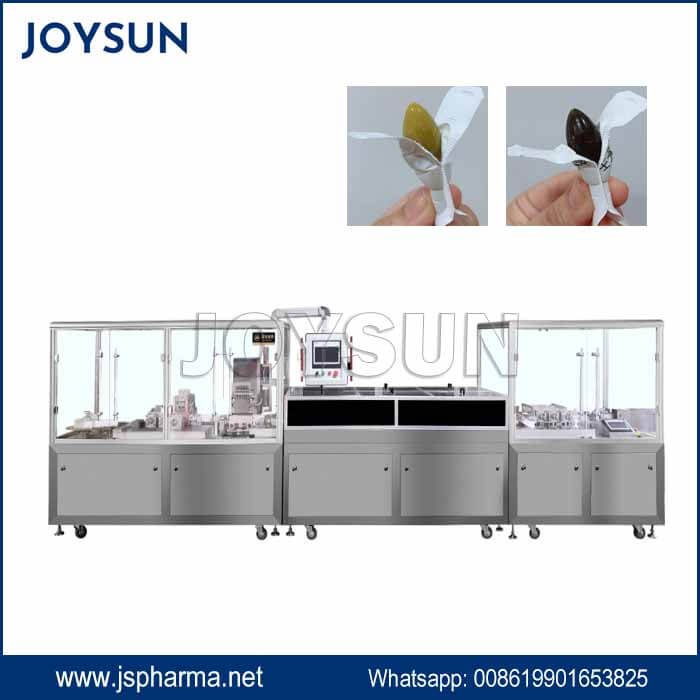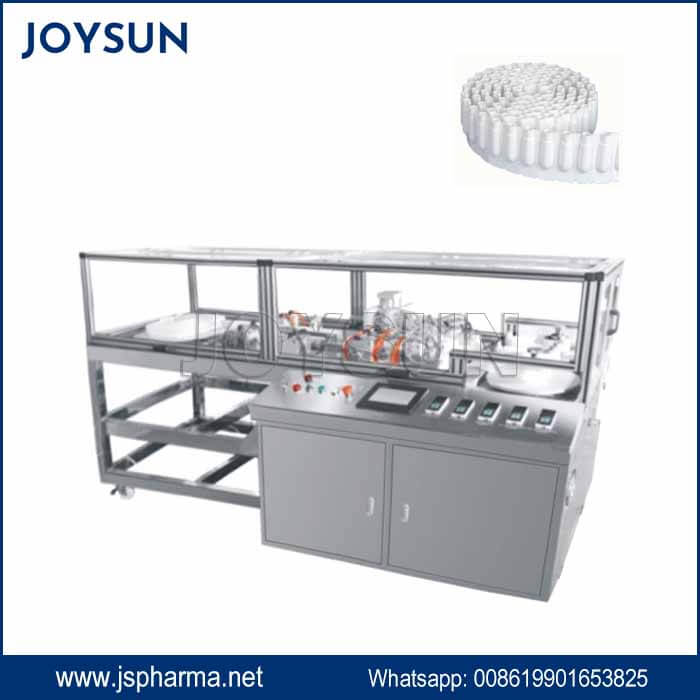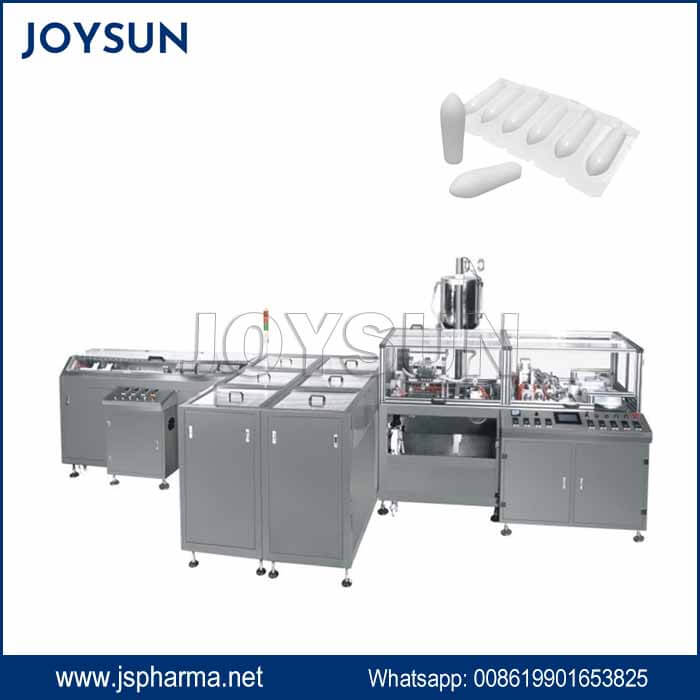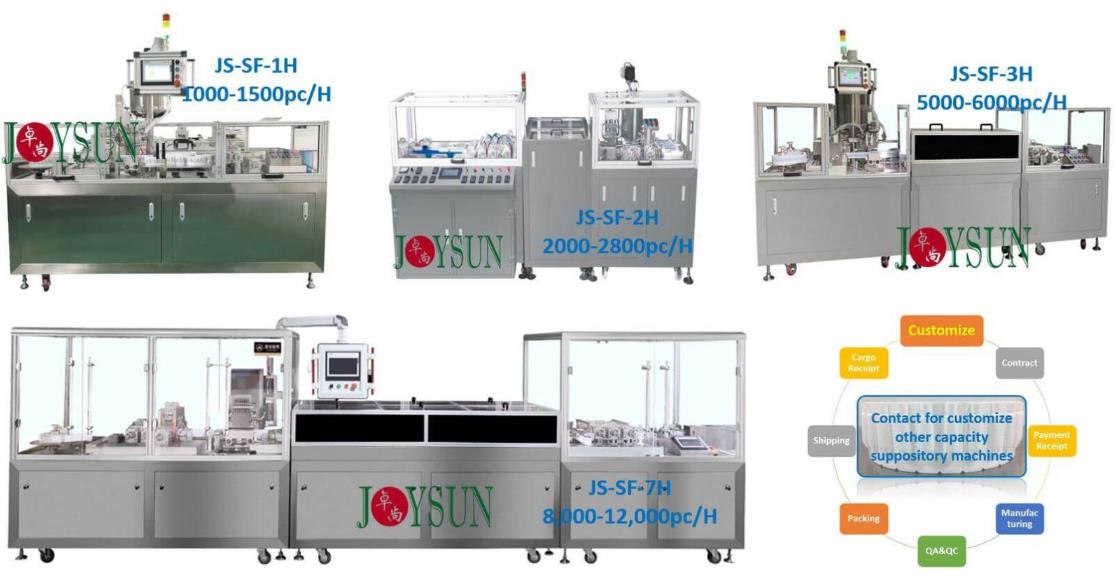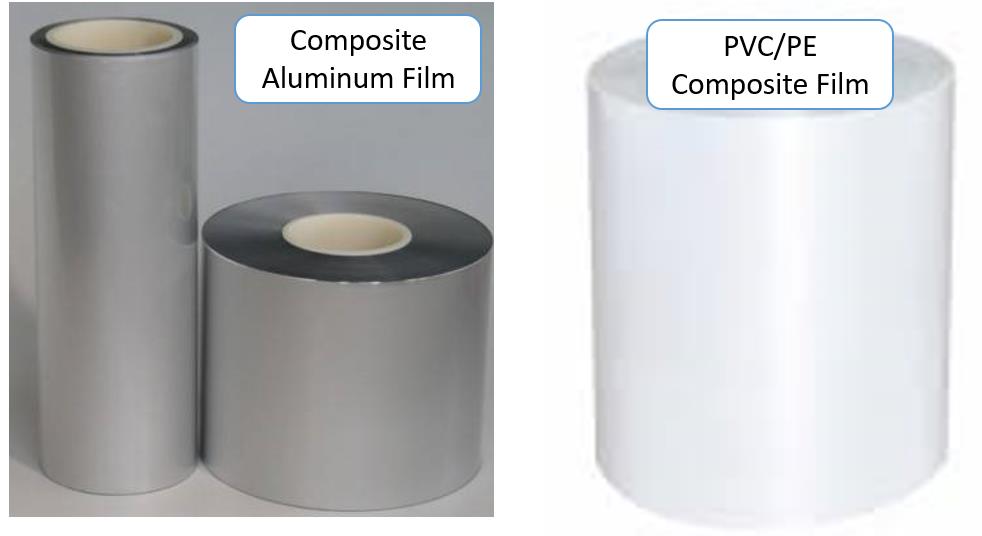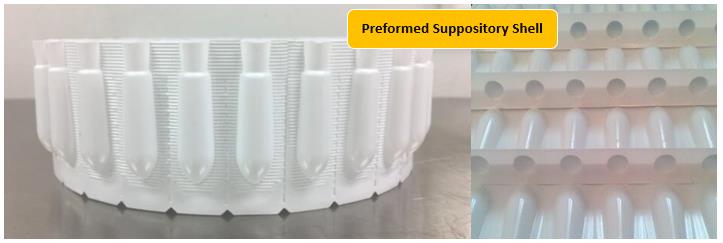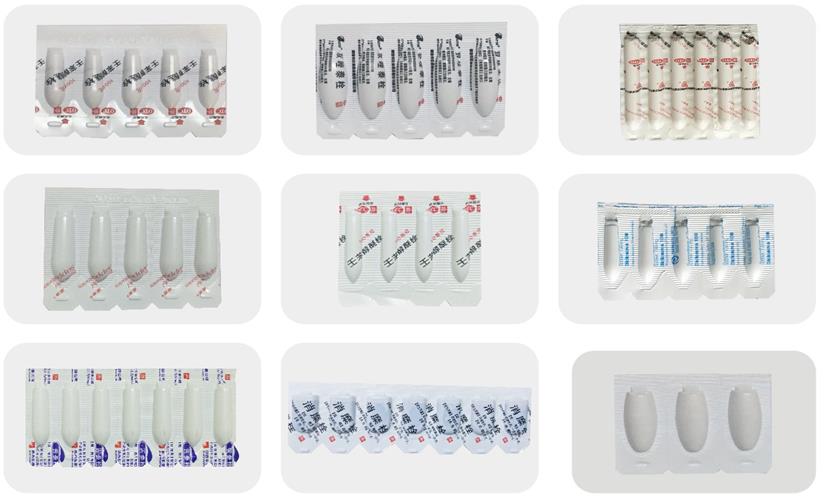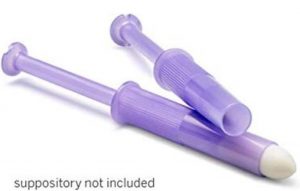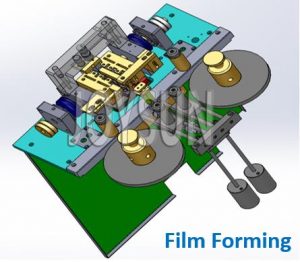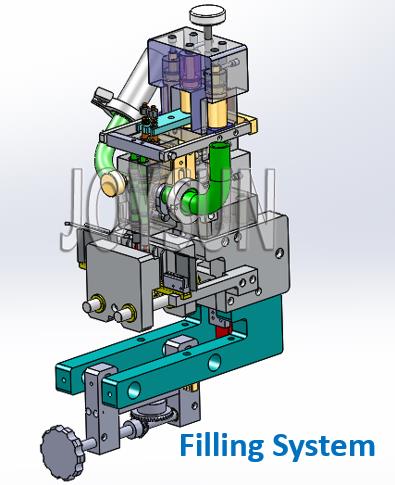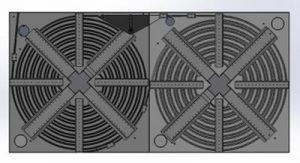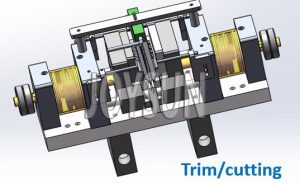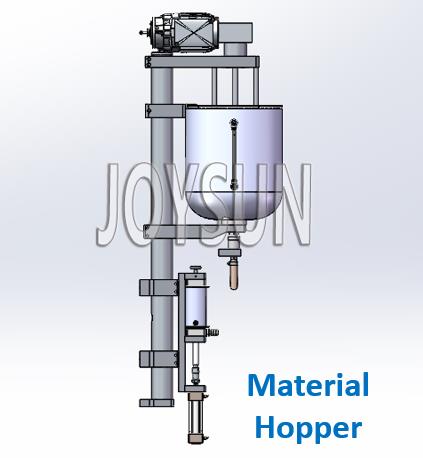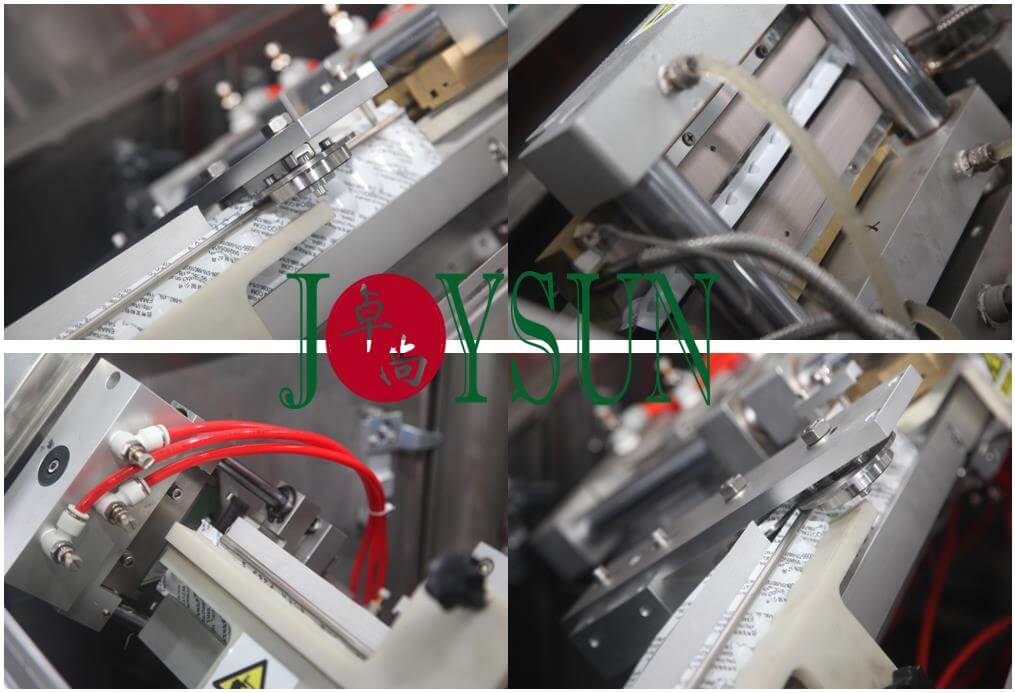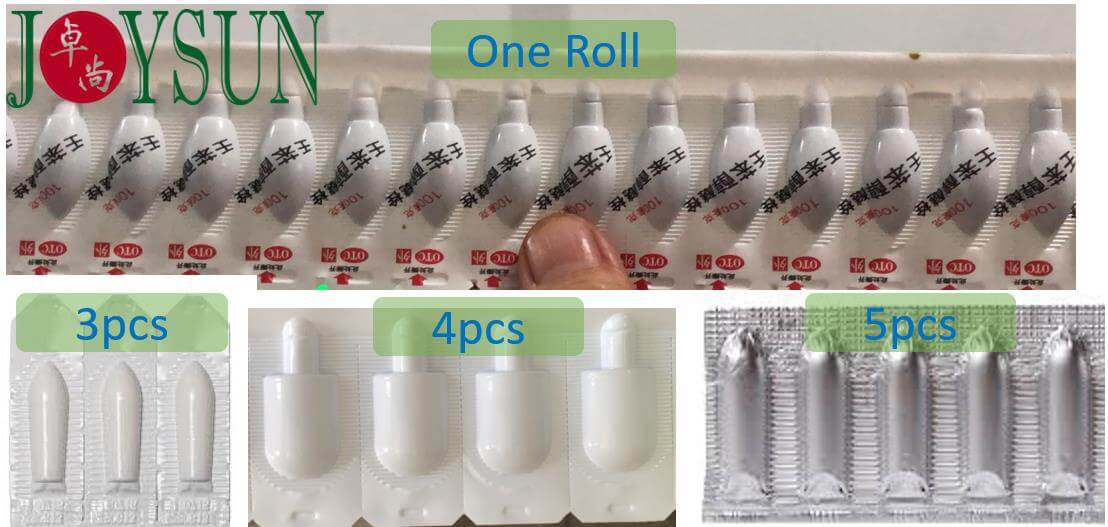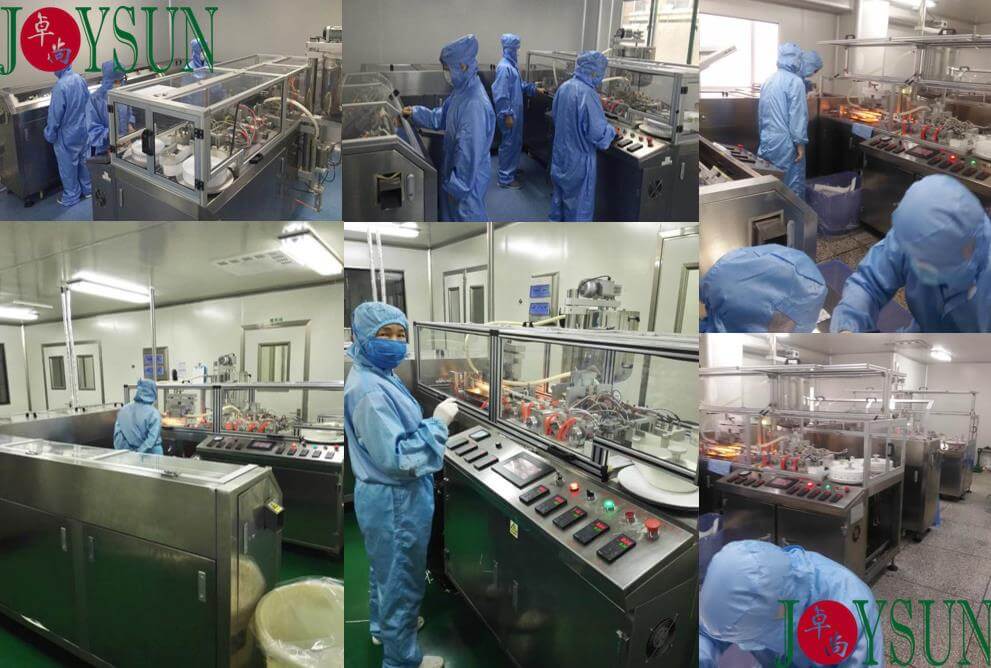Description
Automatic Suppository Filling and Sealing Machine
Suppository Machine Description
This is a suppository filling and sealing machine to make medicine into suppository forms that are widely used to heal body issues or diseases related to anus, rectal, vagina.
There are pre-formed suppository machines that only have the filling and sealing functions. By using this machine, the user should buy pre-formed empty suppository shells first. Such suppositories equipment is assumed to be the early generations. The good part is that the machine is relatively easier to use and less maintenance compared with automatic suppository filling and sealing machines. The pre-formed thermoforming machine doesn’t require high-profile and senior technicians to operate. The disadvantage is that pre-formed suppository shells cost about 30-50% higher than just buying un-formed film, not considering shipping cost. Buying film rolls are not only cheap for raw material but also delivery cost. Formed shell occupies large space if production need is big.
Since we mentioned rolling film here, so what material can be used to make suppositories?
The most used one is PVC/PE Composite film and aluminum film
Tags: Preformed Suppository Shell, Suppository Film , Suppository machine model, suppository machine mold
Types of Suppository Dosage Form.
Tags: Suppository Metal Mold
The wide accepted suppository shapes are torpedo shape, duckbill shape, bullet shape(also known as ovula shape, olive shape). The three shapes vary in size.
♦For human beings using size: 2.2-4.2ml as a popular filing range; suppository medicine for men is relatively bigger than for women.
♦For veterinary medicine: 2.2-8ml, it depends on the animal body figure. Dosage for cows and horses can be much bigger than for dogs.
We have metal suppository molds to make out those specific shapes and each mold design is strictly manufactured upon drawing design and buyer’s confirmation. We focus on mold cavity length, width, depth, filling capacity, and accuracy. Below suppository made from our machine.

How to give or put a suppository?
You can whether use a suppository applicator to do that or place it manually into your body.
How to put in a suppository without tools?
1. Wash your hands and remove the suppository shell. If the suppository is too soft, it should be placed in the refrigerator or ice water for a while before its shell peeling off; and it is warmed in the hand to eliminate the pointed outer edge. Apply water or apply pressure to the tip of the suppository.
2. Rub a water-based lubricant over the tip or dip it in water. It will help you slide it in smoothly.
3. Get in a comfortable position, the small end of suppository should be inserted into first; Gently push deep into upon your body angle till it all goes in.
4. After the insertion of the suppository, close your leg and lay down for about 20 minutes. Let medicine dissolve.
5. It is better not to go to the toilet within 1-2 hours, keeping medicine inside your body to work.
6. Bedtime is suggested to be the best time to apply suppository.
Basic quality requirement for suppository:
The medicine content inside should well mix up with suppository bases, to reach a smooth and integrated shape. Under normal room temperature, the suppository should be solid status. After inserting into the body, it shall soften down, melt and dissolve with body liquid, releasing the effective ingredients onto the applied organ or whole body, but not irritating. It should not deform and crack during insertion.
Types of for suppository bases:
The suppository preparation bases currently are water-soluble and liposoluble bases. For liposoluble purposes, coconut button, synthetic and semi-synthetic fatty acid glycerides. Water-soluble bases like glycerin, gelatin, peg, polyoxyl 40 stearates; additives can be added upon usage. The bases must not react with the main medicine and not affect the effectiveness. Non-irritating, non-toxic and non-allergic body membranes; stable physical and chemical properties, have long shelf time and not affecting bioavailability.
What our suppository filling and sealing machine can do?
For continuous suppository manufacturing in big quantity, the best choice is to have automatic suppository forming, filling and sealing machine. This type of machine combines all actions from raw material compounding to final suppository cutting. We can separate the whole production line into the below steps briefly.
Raw material stirring, film heating, shell-forming, content filling, suppository cooling, shell sealing, shell trimming, and final cutting. Checking out the machine operation video.
Suppository Machine Demo Video
Suppository Machine Structure
We will introduce each part with its functions here. The suppository machine is composed of four parts.
Shell Forming Part:
Film roll(PVC/PE)loading→ gripping and pre-heating →forming mold→ Air blow mold→ final forming to shape. Triangle cutting technology. Place two rolls of PVC/PE composite film onto the above poles at the symmetric position. The first step is to heat up the film and form it into ovula, torpedo, bullet, or olive shape upon customized suppository molds. Here mainly applies thermoforming technology. When two side film pass by the gripping device, film be pulled straight and tight against each other; the sealing edge on mold heat up the film and then release it quickly meanwhile blow air into the formed cavities to shape a shell. This film pulling and shell-forming finished in about 2 seconds. Before filling material into suppository shells, the user should check the quality of empty shells first by checking the sealing rim; can fill water inside to check if any leakage on the shell. The material filling is only allowed after the empty run is normal. We must make sure the shell is strong enough and not over-heated.
Liquid Filling Part:
Two filling head one time filling, filling accuracy ±2%. with an electric-heating& insulation system, with a slow speed agitator to keep material stirring during filling. Material circulated between filling head and material tank via circulation pump. The second step is material filling. The material should always be in good fluidity status so that it will not block the filling nozzles which is a thin filling head. We control the accuracy of around ±2% within the CGMP requirement. One high precise quantitive pneumatic valve to control filling quantity and a circulation pump to recycle material back into mixing hopper so that the content liquid is in a loop during filling. All material contact part is made of 304 stainless steel and sanitary food degree silica, conform to suppository pharmacy requirement. Since we are talking about filling medicine, let us introduce you with one popular base: PEG suppository, the main method is to melting PEG into a liquid status and then add medicine ingredients. Filling temperature is over 60℃ but not too high to protect the ingredient’s effectiveness. When filling, pay attention to the liquid level inside the suppository. Do not fill too full, a 0.2mm height should be left for material to solid down. Too full will also influence top sealing in the following process.
Filled Suppository Cooling part:
After material filling, rows of suppository transfer to the cooling station. (cold water cooling system is required at this part). This part is to cool down material inside the suppository shell. After filling, the filled suppository shells are hot with liquid inside, should be transferred into the cooling chamber to cold down becoming solid status. This process takes about 15-20minutes for the usual formulation of suppositories. Rows of shells will be conveyed into the cooling chamber via channels one by one. A chiller pumps cold water about 10℃ into this cooling system constantly to take away heat inside the chamber, so that the suppository becomes solid very quickly. During cooling, the chamber is enclosed with heavy cover for insulation. The conveyor channel quantity and chamber size are calculated and made to match machine filling speed, not too fast, not too slow. Thus when the chamber is full, shells will be fed into the next step to be top sealed.
Suppository End Sealing and coding:
After material inside suppository becoming solidity comes sealing and coding. Then cutting off-row by 5 or 6 pieces per time. Rolls of solidated suppository shells go into the next step to be mouth sealed, cut, and trimmed for the outer package. A set of heating blocks here to fast heating seal the shell top into an enclosed cavity. Horizontal rolling cutter to trim the edge of redundant film left on the shell, making each shell in uniformity. Then finally the vertical cutter slice down the shell roll to make suppository a 2-pieces, 3-pieces, or 4-pieces boards.
Suppository Machine Material Hopper
This small stainless steel tank is to hold medicine filling content that injects into suppository shells. Usually, the tank is built with a small agitator which keeps stirring during filling to avoid material sediment or solid down. The tank lid is a transparent cover, so we can see through and check inside easier in case lack of material, can re-fill in time. The suppository mixing hopper can be big or small upon material consumption. It also works as a storage tank. The pharmacy factories will usually have an extra big mixing tank to do the suppository preparation. They mix the medicine ingredients with bases first and then transfer into the hopper on suppository equipment. For a small size, our JS-SF-2 model has 2 filling nozzles, can fill 2 empty shells at a time, the hopper is designed of 20Liter. A full hopper material can last for 3-4hours. For the continuous filling and sealing jobs, the buyer can use a pump to fill material onto hopper with liquid level sensors.
Suppository Machine Detail
Suppository Samples
You might have many questions about our suppository filling and sealing machine. We try to list all below to save your time asking around.
Q1. How much room space required to place this suppository machine?
Different models occupy different room space, for example, our smallest model with 2 filling heads requires an area of 4*2.5meter (length* width, height can be as regular cleanroom, the machine is not tall).
Q2. Any suggestions for room temperature and humidity control?
The general cleanroom is ok. No strict requirement for RT and RH since the machine operates within the plastic cover and has its own cooling system.
Q3. Dissolving time in anus:
Usually 20-30minutes as per users’ formula and bases.
Q4. Auxiliary devices:
Water chiller (prepared by user or supplier make a complete line) with a cooling loop.
Air compressor (prepared by user or supplier make a complete line) with air piping.
Q5. How much raw material should be prepared for trial running?
The big machine consumes more raw material during the testing run of the suppository filling and sealing equipment; Again for the 2 filling heads machine, 10kilgram filling material is needed(mixed medicine mass); At least prepare two rolls PVC/PE film.
Q6. How Many Suppository Machine Models do you have and what’s the difference?
We have mainly 3 models of different forming filling and sealing machines; 2 filling heads of 3600pcs per hour, 3 filling heads of 5400pcs one hour, and 6filling heads 10800pcs each hour. More filling heads fast capacity. The bigger machine is with a servo motor. We can also customize high profile suppository making machines with specific requirements.
Q7. What’s your suppository filling and sealing machine advantages?
♣PLC detector function
PLC online monitoring function can detect machine failure, give out alarming, show troubleshooting suggestions.
♣The filling part with the de-static system Note: without this device will affect sealing result. Under the static influence, micro-medicine filled into the shell, the material will climb up a little bit and reach sealing edge to affect sealing.
♣Material tank agitator speed is adjustable Because material and viscosity are different, adjustable speed can better fit different suppository preparation purposes.
♣Cooling speed adjustable system Different materials may need different cooling speeds due to their properties. The too-slow cooling speed will reduce the whole machine production efficiency; the too-high cooling speed may suddenly drop temperature then damage material inside the suppository.
♣Cutting number adjustable system According to production need can conveniently set up finished products cutting by 4/5/6/7 pieces.
Q8. Your lead time after putting an order?
Small scale machine takes about 30days to finish; big production machine takes about 60days to manufacture.
Q9. What is about your machine training?
7 full days training is recommended; The training plan includes basic suppository machine technology introduction; installation; empty running; trial production; debugging, troubleshooting; cleaning, and some regular maintenance. We will instruct buyers with crucial value settings such as heating temperature and cooling temperature; And teach them the tricks to use such machines. Suppository machine buying happy acceptance.
Q10. What spare parts provide for free if the buyer orders a suppository machine?
One set of quick-wear spare parts and a tool kit will be provided for free, including heating cloth, air connections, heaters, sealing rings.
Common troubleshooting for the suppository machine?
Q1: The suppository machine cannot start?
A1: Check the power that goes into the machine is good or not, and machine wiring is proper or not; Whether fuse in the cabinet burns out or not; the emergency stop is released or not; the monitor display/HMI touch screen is reactive to touch or not.
Q2: Auto mode cannot work?
A2: Make sure to reset suppository making machine; Check the fuse and emergency stop; Check if there is any alarm showing on the HMI and not be cleared; whether all sensors are normal to give out signals; Or the machine is under manual mode.
Q3: The suppository filling and sealing machine cannot reset?
A3: Try to press emergency stop and reset again for several times; Checking sensor reader;
Q4: The suppository mold cannot heat up?
A4: Please check the settings on temperature controllers that work for molds, make sure setting value is right; Check electric heater connection is correct and heaters are not damaged or burn out; Check whether the heater is short-circuited or not.
Q5: The suppository cannot cool down and solidify.
A5: Check the cooling fan for cooling chamber work or not; Whether the water chiller connection is right or not;
Q6: The suppository filling and sealing speed slows down
A6: Check the air system to make sure big enough compressed air goes into the suppository machine; To avoid any air blockage; Checking the piston seal is good or not, there should be no leakage.
Note: Please look for the relevant causes carefully according to the relevant trouble description and deal with the trouble according to the relevant remedies. If some troubles do not list here, the buyers can contact us.
Tags: suppository machine, suppository filling and sealing machine, preformed suppository shell,suppository mold, suppository making machine, suppository film
Maintenance routine for the suppository machine?
(1) Once a day, cleaning material tank, circulation pump, filling pump and circulation pipes; Use hot water and mixed detergent or disinfectant soap water as a cleaning source.
(2) Once a week, remove the residual moisture in the air pressure system. The water vapor in the air will also condense into moisture, so the bottom hole of the air pressure device should always be drained to prevent moisture from harming the piston
(3) Once a week, add anti-rust lubricant to the oil cup on the air pressure device.
(4) Cleaning the air pressure filter system once a week. The air pressure system has three filters, one to filter moisture from the air; the other two to filter dust in the air and oil residue from the triple cup. Remove parts regularly, wash them with hot water or detergent, and blow them dry with compressed air.
(5) Clean the photoelectric sensing surface once a week. Inspect these parts and wipe with a soft, dry, and absorbent cloth.
(6) The silencer is replaced every three months, (the silencer is installed on the base of each solenoid valve)
(7) Lubricate mechanical parts once a month; Lubricate the piston and the guide rod with lubricating oil, and lubricate the friction parts of the mechanical moving parts such as bearings, gears, and racks with grease to ensure normal operation.
(8) Checking at any time, if necessary, replace damaged or worn out parts and wearing parts to ensure the normal operation of the suppository machine.

